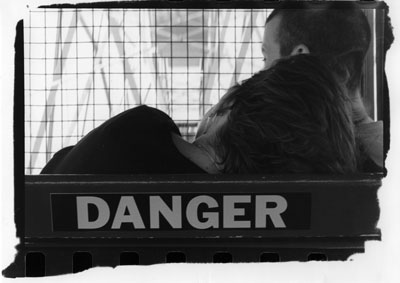All Nonfiction
- Bullying
- Books
- Academic
- Author Interviews
- Celebrity interviews
- College Articles
- College Essays
- Educator of the Year
- Heroes
- Interviews
- Memoir
- Personal Experience
- Sports
- Travel & Culture
All Opinions
- Bullying
- Current Events / Politics
- Discrimination
- Drugs / Alcohol / Smoking
- Entertainment / Celebrities
- Environment
- Love / Relationships
- Movies / Music / TV
- Pop Culture / Trends
- School / College
- Social Issues / Civics
- Spirituality / Religion
- Sports / Hobbies
All Hot Topics
- Bullying
- Community Service
- Environment
- Health
- Letters to the Editor
- Pride & Prejudice
- What Matters
- Back
Summer Guide
- Program Links
- Program Reviews
- Back
College Guide
- College Links
- College Reviews
- College Essays
- College Articles
- Back
Pedal to the Metal MAG
Most new cars have the anti-lock braking system (ABS), but few teen drivers need to use it. I have, once, and I hope never to again.
That day, after a word of encouragement from my passenger, I pushed the gas pedal down until I could feel the floor.As the vehicle accelerated, exhilaration engulfed me and a smile spread across my face. All I could see was the road as everything else became a blur. Suddenly, orange cones came into focus. Moving at 60 miles per hour, the car squealed as I slammed on the brakes. In a few seconds, the car jerked to a stop inches from the cones. I took a deep breath and lifted my foot off the pedal, wanting to try again. However, I was one of 12 students attending this course at In Control Advanced Driver Training and it was time for someone else to take the wheel.
In Control teaches drivers how to steer and brake in simulated emergency situations. The venue, a former naval station runway, is perfect because you can practice emergency braking at high speeds, experiment with swerving, and use the ABS in a safe environment?
Professional race car drivers are the instructors and I gained more knowledge from them than I ever could have from a regular drivers education class. With a combination of classroom and hands-on learning, the program provides a wealth of information and statistics. For example, did you know that airbags do not guarantee your safety? Or that SUVs do not have increased safety, only better performance?
The drills were the most entertaining part of the course and included tailgating, slaloming around cones, swerving into a second lane, observing rear visibility,and using the ABS. The educational parts are veiled by the amusement of driving at high speeds, quick turns, and adrenaline.
I absolutely recommend In Control or a similar course because it can save lives and help decrease teen accidents, where 93 percent are caused by driver error. While I would prefer never to find myself under these real circumstances, I can honestly say that I am more confident since taking the course. For more information visit incontroladt.com
10 Tips for Staying Safe
Behind the Wheel
from In Control Advanced Driver Training
- Tailgating: The faster a car is traveling, the more distance it needs to stop. A car accelerating from40 mph to 50 mph needs an additional 30 feet to stop!
- Backing Up: Cars are designed to drive forward. Avoid backing up at all costs.
- Beware of Airbags: Airbags deploy at a rate of 250 mph. If hands are not properly positioned, the airbags can turn them into projectiles that cause bruises and burns, even broken facial bones.
- Seat belts Prevent Steering Obstructions: Seat belts prevent passengers from being thrown into the driver’s way, blocking their control.
- Seat belts For Control: Drivers cannot control the car while going around a turn or swerving to avoid a crash if they are busy hanging onto the steering wheel to keep from flying around the car.
- Look Ahead: A common habit is to watch the car directly in front of you so that when it stops, you stop. Keeping an eye on the vehicles two or three ahead allows for longer reaction time and fewer sudden stops.
- Pumping the Brakes: Many people complain about the Anti-Lock Brake System (ABS) because they do not know how to use it properly.
With ABS: Slam on the brakes with all your might - you cannot push too hard. Don’t pump!
Without ABS: Don’t slam on the brakes, instead apply steady, even pressure. Should wheels “lock up,” release a little and hold to avoid skidding.
- Swerving: Many believe the best way to avoid an accident is to swerve away from the obstruction. False! Braking first provides better traction, thus greater control and reduced risk of rollovers.
- SUV/All-Wheel Drive: SUVs and AWD vehicles do not offer additional safety, only better performance. SUVs allow drivers to accelerate faster and not get as stuck in snow, but they are harder to stop, tend to roll over, and their high bodies make turning more difficult.
- Fatigue: A person driving on four hours of sleep or less is the equivalent of a legally drunk driver.

Similar Articles
JOIN THE DISCUSSION
This article has 1 comment.

0 articles 0 photos 12292 comments